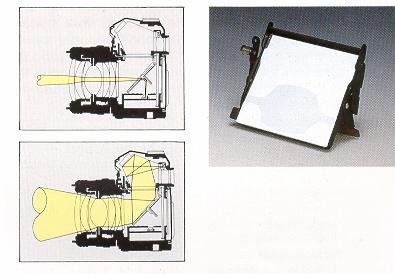If you find this manual useful,
how about a donation of
$3 to:
M. Butkus, 29 Lake Ave.,
High Bridge, NJ 08829-1701
and send your e-mail
address
so I can thank you.
Most other places would charge
you $7.50 for
a electronic copy
or $18.00 for a hard to read Xerox copy.
This will help me to continue to host this site,
buy new manuals, and pay their shipping costs.
It'll make you feel better, won't it ?
If you use Pay Pal, use the link below.
Use the above address for a check, M.O. or cash.
<<< IF YOU WOULD LIKE THIS OR ANY PDF FILE
PRINTED, BOUND AND MAILED TO YOU,
SEE THIS OUTSIDE COMPANY'S OFFER >>>
BACK TO MAIN MANUALS PAGE
CLICK HERE FOR CHINON CP-X - English
Chinon CP-X Bedienungsanleitung
Chinon CP-X Mode D'Emploi
Chinon CP-X Manual de Instrucciones
CLICK HERE FOR A
Chinon CP-6 PDF
VERSION OF
THIS PAGE
CLICK HERE TO
CONTINUE TO
SECTION TWO

 |
Chinon CP-6
TECHNOLOGY
In
1984, Chinon introduced the world's first twin program SLR. Now again,
Chinon demonstrates their photographic and electronic ingenuity by producing
the Chinon CP-6 — The first camera to incorporate twin program metering,
DX automatic film speed indexing and the innovative concept of spot/average
metering. With the working photographer in mind, Chinon engineering produced
a camera that can only be described as the ultimate in features - but easy
for anyone to use - built like a Chinon.
|
INNOVATION
What
the world needs is a sophisticated camera that takes great pictures but
doesn't have to be relearned each time it's handled. The unique selection
of features built into the Chinon CP-X reaches these parameters dramatically.
By utilizing three different metering modes the CP-X allows the photographer
to solve any photographic situation — action, depth of focus, or total
manual control of those lighting conditions that just don't come out properly
without a little help from a practiced eye.
|
 |

|
CP-6 SPOT TWIN PROGRAMS
SUPER HIGH TECH
FOR STUNNING
PHOTOGRAPHIC
EFFECTS
|

|
TWIN PROGRAM AE SYSTEM
SELECTABLE MULTI - METERING MODE
APERTURE PRIORITY AE MODE
FULLY METERED MANUAL
EXPOSURE MODE
AUTO FILM SPEED SETTING SYSTEM |
 |
|
ACTION
. . . P1 THE SPORTS MODE
For
most beginning photographers, pictures without blurs or camera movement
are an initial goal. The P1 mode in the Chinon CP-6 camera is all that
needs to be set. Shutter speed is emphasized in this mode, with a shutter
speed of at least 1/60th of a second programmed into the camera right up
until the lighting conditions start fading. The novice appreciates the
fact that once the camera is set on P1 and the lens diaphragm is stopped
all the way down, no further adjustment need be made. Conversely, the more
advanced photographer uses these same exposure range-of-use settings so
that he can concentrate more fully on that perfectly captured image without
intermediate camera.
|
CHINON
PROGRAM TECHNOLOGY. . . HOW IT WORKS
State-of-the
art micro circuitry provides an infinite selection of shutter speeds and
lens aperture combinations. When the Sports Mode (P1) is selected and the
camera is coupled to a standard 50 mm F/1.4 lens, the shutter speed chosen
will be 1/1000th sec. at EV 19 with an aperture seeing of F/22. As lighting
conditions diminish, both shutter speed and aperture will "slow down,"
however the program mode will maintain the fastest possible shutter speed
to minimize the effect of camera shake and provide "action freezing" photography.
By comparison, on a cloudy day, the Sports Mode might select a shutter
speed of 1/60 sec. with the lens aperture at its maximum opening (F/1.4)
at EV 7. Should the lighting conditions fall below EV 7, the CP-6 will
then convert to the Automatic Aperture Priority AE mode, providing perfect
exposures as long as 8 seconds in duration.

|
CHINON
"CREATIVE" P2 MODE - WHEN MORE THAN JUST "STOPPING ACTION" IS REQUIRED
Once
the basics of photography are learned, the area of focus - depth of field
- becomes of utmost importance to the photographer who wants total creative
control of picture sharpness.
|
On the CP-6 camera the P2 seeing once again
permits the photographer to take his eyes off of the controls and onto
the subject. As the camera controls both shutter and aperture, the emphasis
now falls toward keeping the lens stopped down as far as possible. Therefore,
shutter speeds will fall more rapidly to 1/8 second so depth of field will
be greatest throughout virtually the entire exposure range.
CHINON CREATIVE MODE
The
P2 chart illustrates the characteristics of the creative program. In this
mode the camera first selects the optimum aperture, then selects the appropriate
shutter speed to obtain a perfectly exposed picture. This preference for
selective aperture provides the photographer with consistent depth-of-field
emphasis without requiring any further camera control adjustments. As in
the chart depicting P1 characteristics, under bright light conditions both
program modes will select a shutter speed of 1/1000 sec. at F/22 under
EV 19 light intensity. The difference, however, is that as the lighting
conditions diminish, the P2 program will cause the aperture to remain "stopped
down" as long as possible. This enables depth-of-field to remain in the
program all the way to 1/8 sec. In P1 the maximum aperture is reached at
1/60 sec.
 |
SPOT
METERING - PINPOINT ACCURACY
Although,
sometimes cameras seem to be able to do almost anything all by themselves
this only really occurs when the picture captured in the viewfinder is
placidly average. With the spot metering mode on the CP-6, a critical choice
of metering can be selected with the flick of a switch.
|
 |
Spot
metering ignores the back ground darkness and gets the subject perfectly
exposed.
Spot
metering instantaneously increases the possibilities open to the eye and
mind of the photographer. By using the spot metering mode, only 2% of the
viewing area, roughly the area of the split image focus ring will be used
to pinpoint the subject for concentrated exposure consideration. And, since
the spot metering system works in all four exposure modes, the photographer
never has to settle for "second" best when creativity is concerned.
|
SPOT
METERING - WHEN YOU CAN'T SETTLE FOR "AVERAGE"
 |
With
"averege" metering, the subject is unacceptably over exposed.
Whenever
lighting conditions vary greatly from subject to foreground or background,
spot metering should be used to control the right exposure on just precisely
the portion of the image that the photographer wants to be "on the money".
Conversely, a camera that provides only spot metering can be misdirected
by scenes in which strong variations in lighting may cause a spot system
to be tricked into overcompensation. In a case such as this, Chinon's CP-6
"average" metering system definitely proves to be superior.
|

|
SPOT/AVERAGE
METERING - WHEN NOTHING ELSE WILL DO
There
are still other lighting conditions where neither average or spot will
help create a photograph, rather than merely a snapshot. With the exclusive
spot/average metering mode built into the CP-6, backlighting for just the
right effect is flawlessly accomplished in just one shot. Controlling lighting
conditions to match the photographer's exacting eye is simple and effectively
accomplished with the Chinon CP-6. The spot/average exclusive
- for when ordinary picture will not do.
|

CREATIVE
WITH SPOT/AVERAGE - THREE STEPS TO PERFECTION
The
Spot/average mode is used in the Aperture priority AE mode. After selecting
the desired aperture and placing the metering select mode in "average,"
the shutter release is partially depressed to activate the camera's electrical
system. While maintaining finger pressure, the "M" button is touched, then
released. The camera's audible tone will be heard when this command is
accepted by the camera. While still maintaining pressure on the shutter
release, the metering select mode is switched to "spot." The tone will
again sound, indicating a light measurement in the spot mode. Within the
viewfinder, three indicators will be apparent: "spot," and two shutter
speeds. The blinking speed is the "average" reading and may vary as the
picture is composed; the other speed is the "spot/average" speed that will
be the actual shutter speed chosen by the CP-6 for the eventual exposure.
Relaxing finger pressure on the shutter release or taking a picture cancels
the "spot/average" mode with no memory for future photographs.
SPOT/AVERAGE
- PERFECT BALANCE
As
a rule, the spot/average mode has it's greatest advantage when a perfect
exposure of a central subject will result in an overly dark or too bright
background. By using this compromise mode, that optimum in-between exposure
can be created with a minimum of camera manipulations.

With
averaged metering, the subject is unacceptably under exposed due to the
back light effect.
APERTURE PRIORITY AUTOMATION

AUTOMATIC
APERTURE PRIORITY EASILY ACCOMPLISHED WITH THE CHINON CP-6
The
automatic mode provides the photographer with a constant depth-of-field
control. Simply rotate the Exposure Mode Select Dial to the "A" position
and the metering mode select lever to the "average" indicator to set the
CP-6 for automatic photography.
Next,
select the appropriate F-stop for the preferred amount of depth-of-field
necessary for the creative effect desired. The camera's sophisticated automation
will precisely select the correct stepless shutter speed for a perfect
exposure...every time.. With this type of creative control, the photographer
may choose the exact area of the photograph to be in focus.

The
truly experienced photographer recognizes many situations when a manual
exposure will result in a superior creative expression. The CP-6 offers
a fully metered manual system that can be utilized in two ways: aperture
preference or shutter preference. Both techniques start by seeing the exposure
mode select dial to the "M" position. If precise aperture control is desired,
the required F-stop is set on the lens. This will signal the electronics
to display a glowing LED in the viewfinder.
 |
The shutter selected by the camera will be indicated
by a flickering LED in the viewfinder. Simply depress the M button to superimpose
both LED's for a proper exposure. For further creative effects, you can
purposely under or over expose the picture. Manual shutter preference is
achieved by using the M button to first select the desired shutter speed
and then rotating the lens aperture ring until the viewfinder LED's are
superimposed.
|
CHINON
CP-6 VIEWFINDER... A WEALTH OF INFORMATION

The
Chinon CP-6 is designed for the serious photographer, displaying all vital
camera information in its big bright viewfinder.
1) Aperture-Selected lens seeing with automatic/manual
modes.
2)
Flash Ready LED - Green 1/125 sec. LED glows when Chinon dedicated flashes
are recycled and ready to fire.
3)
Program Mode LED - Green LED glows when camera is set to P1 and P2 program
mode.
"Program" LED flickers when lens aperture
is set within four stops of maximum seeing.
4)
Over Exposure LED - Red LED glows indicating too much light for proper
exposure.
5)
Safe shutter Speed Range - Green shutter speed LEDs indicate shutter speeds
selected which do not require tripod or flash.
6)
Slow shutter Speed Range - Orange shutter speed LEDs indicate slow shutter
speeds selected which require flash or tripod to prevent possible subject blur.
7)
Under Exposure LED - Red LED glows indicating insufficient light for proper
exposure.
8)
Split Image Focusing System - Used to focus vertical subjects and to make
focusing with extreme wide angle lenses more convenient.
9)
Microprism Collar - Used to focus subjects under low light conditions and
when long
telephoto lenses are used.
10)
Ground Glass Screen - General purpose method of focusing.
AUDIBLE SIGNALS INCREASE THE VERSATILITY
OF THE CP-6
In
the manual exposure mode, special beep tones signal a change in shutter
speed or when the aperture is set for a correct exposure. This convenient
audible signal allows the photographer to obtain manual exposures without
having to look through the viewfinder.
1
) S.C.S. (shutter Change Signal) single beep will signal each time the
shutter speed changes.
2)
M.E.S. (Manual Exposure Signal) single beep will signal when the correct
aperture is set.
CHINON'S
HALF-MIRROR SYSTEM - FOR FULL PHOTOGRAPHIC POSSIBILITIES
The
heart of the Chinon CP-6 metering system is Chinon's exclusive half mirror
design. When spot metering is selected, the main half mirror transmits
15% of the total light to the sub-mirror. The sub-mirror then transmits
this light to a silicon photo diode (SPD) that is located at the bottom
of the mirror box. After the information is accepted by the camera's computer,
the mirror proceeds up out of the way of the light path and a perfectly
spot metered image.
ELECTRONIC FILM SETTING - ONE
LESS POINT TO REMEMBER
With
less settings to be made before or during shooting, more valuable time
can be spent creatively. By incorporating an automatic film speed indexing
system "DX" all film cartridges having DX markings will electronically
set the proper ISO from 25 all the way to 5000. Naturally, the CP-6 owner
will want to override the exposure system on occasion. Built into the film
speed dial is a two stop override system that permits creative exposure
effects while utilizing the CP-6's incredibly accurate TTL metering system.
FLASH PHOTOGRAPHY— INNOVATIVE AND TROUBLE FREE

|
The
Chinon CP-6 can use any of five automatic dedicated strobe units for electronic
flash photography. The top of the line S-480 offers a "Pro-Style" bracket,
LED readouts and five automatic flash ranges. Each Chinon flash offers
electronic dedication for proper flash synchronization.
|
Once the exposure
mode select dial is set to "A" and the aperture set according to ISO and
power range, the CP-6 will indicate when the flash is fully recycled by
a flashing LED in the camera's viewfinder. Also, if the flash should not
be completely recycled, either the aperture preferred AE selection or the
pre-selected manual exposure seeing will be used rather than taking a flash
picture with less than a fully recycled flash unit. Both the CP-6 and all
of the flash units can be set manually for even the most demanding lighting
situations.
UNLIMITED
MULTIPLE EXPOSURE CONTROL
Multiple
exposures with perfect frame to frame registration are made easy by the
CP-6. Just slide and hold the multiple exposure lever to the left during
film advancement.
Be
part of the creation of memories! Simply slide the selt-timer switch to
the on (up) position, then depress the CP-6 shutter release. The cancellable
electronic self timer delays shutter release for ten seconds. By pushing
the self-timer switch to the bosom position, the CP-6's audible warning
tones can be silenced.
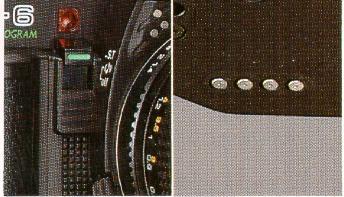
BODY
POWER SUPPLY CONTACT
When
the optional Chinon Power Winder is coupled to the CP-6, the camera's power
is supplied from the Power Winder by a unique electronic Body Power Supply
Contact. No bakeries are then required in the camera body. This exclusive
power source concept ensures extended power supply.
DETACHABLE POWER GRIP/BATTERY CONTAINER
The
CP-6 body grip, not only supplies power to the camera, but also provides
additional handling stability. Since it is detachable, it can be easily
removed when the camera is not in use. In addition, it eliminates accidental
bakery corrosion.

MULTI-SLOT
NEEDLE FOR EASY FILM LOADING
Film
loading is fast and foolproof with the CP-6's multi-slot needle film loading
reel. The positive film loading system securely fastens the film the first
try, allowing the film to be loaded easily and with confidence.
BULB PHOTOGRAPHY (TIME EXPOSURES)
WITH
ELECTRONIC AUDIBLE TIMER SIGNAL
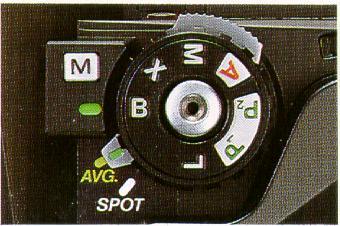
Just
turn the exposure mode dial to the "B" position for bulb (time exposure)
photography. The CP-6 is designed with a timer signal that beeps to indicate
the exact time period the shutter remains open.

EXPOSURE
COMPENSATION
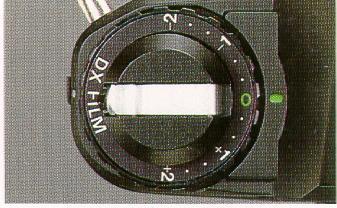
|
When
deliberate over or under exposed effects are desired the Chinon CP-6 can
be adjusted up to 2 full stops in 1/3 EV increments. Simply pull out and
turn the film speed dial and set it to the desired exposure compensation
position. |
Primarily intended for general photographic techniques, this
compensation feature is invaluable when creating spectacular effects with
the built-in multiple exposure lever on the CP-6. This simple feature will
make you a master of light control.
CHINON CP-6 NOMENCLATURE
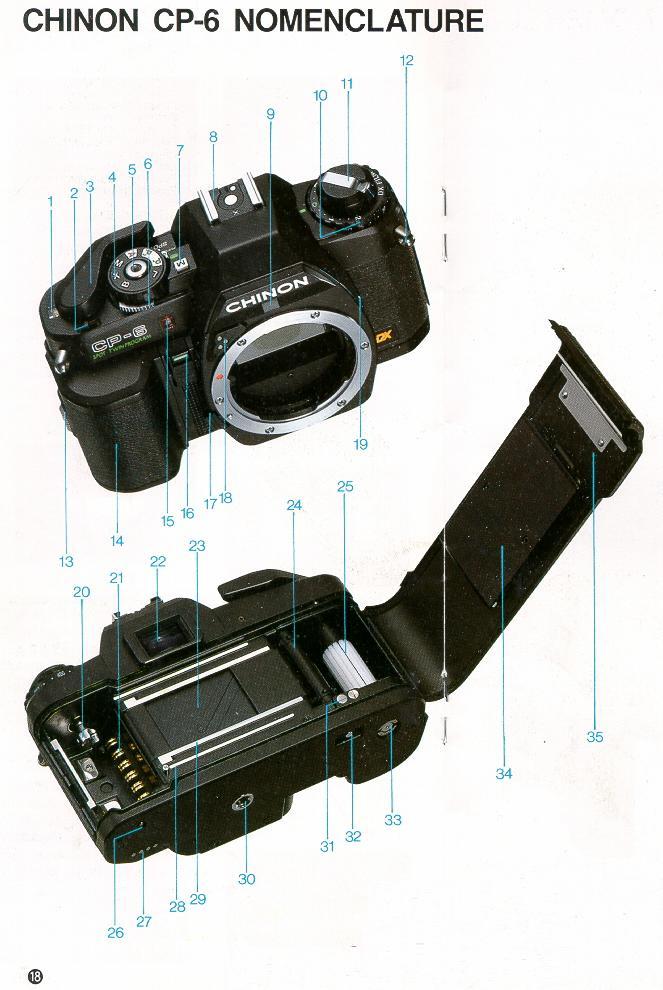
1.
Film counter window
2.
Multiple exposure lever
3.
Film advance lever
4.
Exposure mode select dial
5.
Shutter release button
6.
Metering mode select lever
7.
Manual shutter speed select button/Exposure memory button
8.
Accessory shoe (hot shoe)
9.
F-stop window
10.
Film speed dial (ISO)
11.
Film rewind knob and back opening knob
12.
Shoulder strap eyelet
13.
Power grip attachment screw
14.
Power grip (battery compartment)
15.
Self timer LED Self timer/Audible signal on/off switch
16.
Lens lock release lever
17.
AF electronic contacts
18.
X sync socket
19.
Film chamber
20.
DX film contacts
21.
Viewfinder eyepiece
22.
Metal focal plane shutter
23.
Sprocket teeth
24.
Multi-slotted needle
25.
Power source contact
26.
Power window electronic contacts
27.
Film guide rail
28.
Film rail
29.
Tripod socket
30.
Auto Date electronic contacts
31.
Rewind button
32.
Power winder coupler
33.
Film pressure plate
34.
Camera back
MICRO-ELECTRONICS
- THE "HEART" OF THE CHINON CP-6
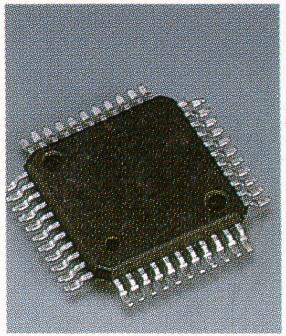
Unsurpassed
microelectronic technology controls such state-of-the-art functions as:
four metering modes, dedicated flash synchronization, electronic viewfinder
information, automatic AF operation, extended time exposure monitoring
and more.
CLICK HERE TO
CONTINUE TO SECTION TWO


















